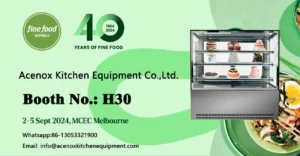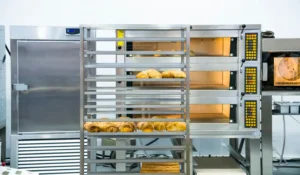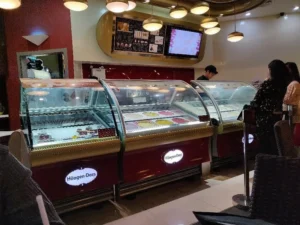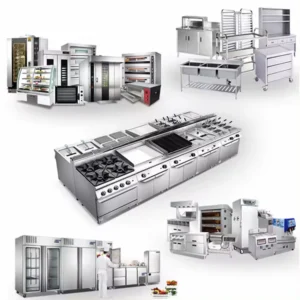What decides the cost of commercial stainless steel fabrication products?

Stainless steel kitchen equipment fabrication are essential for any commercial kitchen as brass, copper or aluminum don’t have as many positives as stainless steel does.
Commercial kitchens are not the same as domestic kitchens. When cooking food for a large group of people, you can’t afford weak spots in the system. That is why stainless steel fabrication is an important material in these environments. This blog post will go through the elements that influence the cost of stainless steel fabrication in commercial kitchens and why it is such an important part of these facilities. Stay tuned!
The following factors influence the cost of stainless steel fabrication projects:
The Grade of stainless steel
While this may be the easiest cost to estimate and manage, it is essential to carry out material cost research.
The type and Grade of steel fabrication will always impact the project’s overall cost. The most popular stainless steel grades are 304, 201, and 430. Due to its raised nickel content, grade 304 stainless steel is more corrosion-resistant. 430 stainless steel is a smooth, corrosion-resistant metal that readily bends, stretches, and draws. The nickel also makes grade 304 simpler to draw or press. However, that same component raises the price of grade 304 steel. The amount of nickel element in grade 201 is much lower than in grade 304. Due to the differing nickel element composition, 201’s corrosion resistance is not as good as that of 304; also, 201’s carbon content is larger than that of 304, making 201 harder and more brittle than 304.
Simply put, grade 304 has more flexibility and lifespan, while grade 430 and 201 are less expensive steel choices.
Structure
The more complicated the structure, the more expensive it will be.
Some finishing processes will require additional machinery to achieve specific benefits such as chemical resistance, electrical conductivity, increased durability, or even a particular color or appearance. In commercial kitchens, cabinets usually have more complicated designs that require more materials to construct. In the same way, more materials mean higher production costs and, in the end, a higher selling price.
On the other hand, workbenches are known for having a more straightforward design, which means they need fewer materials. With fewer materials required, the production cost remains lower. However, if the workbench has a drawer, the cost will gradually rise. Hoods are sometimes more expensive than other stainless steel fabrication products since they have a stainless steel body, filters, and motors.
Complexity and design
A design that requires more cuts, mills, bends, and other processes will cost more since it requires more time on each machine and requires more manual handling.

The proposed design might have a significant impact on the costs of your project. Complexity and design determine the production procedures and processes needed to produce your parts. Such designs are also more expensive because they go through many design, prototype, and testing stages. Simply said, increased complexity requires more time for creation, and time influences project costs.
Labor
Customized stainless steel fabrication necessitates highly trained labor.
When determining labor requirements, always consider both human and mechanical labor in the manufacturing of the part. The scale of human labor required from start to finish will dictate the number of people involved. The qualifications of these people are also included in these costs, as the abilities required for using software and specialized machinery will increase their labor fees. The more complex your design, the more highly trained labor your project will require.
Made by mould
A good commercial-grade sink with a distinctive style is sometimes made by mould. That means spending more time working with contractors and spinners to create a one-of-a-kind, functional, and aesthetically beautiful shape. However, making a new mould is not cheap, the cost range from 10000 dollars to 30000 dollars probably. Thus, the average cost of each piece also rises.
Production Volume
Naturally, the number of items you want to be fabricated will influence your final pricing. When there is a greater number of parts, the fabrication process can be optimized to maximize efficiency and minimize waste over time. A higher volume can also lead to the negotiation of costs from bulk orders of tools, supplies, and other project requirements. The time and processes required for producing a few items versus several hundred items are nearly the same. Therefore, as the quantity increases, the overall cost may decrease.
Packagings and Shipping Costs
Often, cardboard boxes or plywood packing are used to ensure safe transportation. Large, complicated fabrications might require custom-designed packaging that must be created and engineered to seal and protect the item in transit properly. Similarly, if shipping expenses are not included in the initial price or budget, they can become an unexpected last-minute charge. The distance that parts have to travel is an obvious factor in stainless steel fabrication costs.
Exchange rates and political stability
Exchange rates significantly impact project costs since a higher-valued currency makes a country’s imports cheaper and exports more expensive in overseas markets. A lower-valued currency makes a country’s imports more expensive and its exports less expensive in international markets.
Similarly, political stability is important when it comes to importing goods. If the country hasn’t seen political upheaval in a long time and the chances of this happening are small, it can positively affect the exchange rate.
Selecting a Stainless Steel Fabrication Supplier
Experienced stainless steel fabricators like Acenox may help you determine your fabrication requirements and guide you toward the best stainless steel grade for your commercial kitchen setups. Contact us today for further details and information regarding our services.






